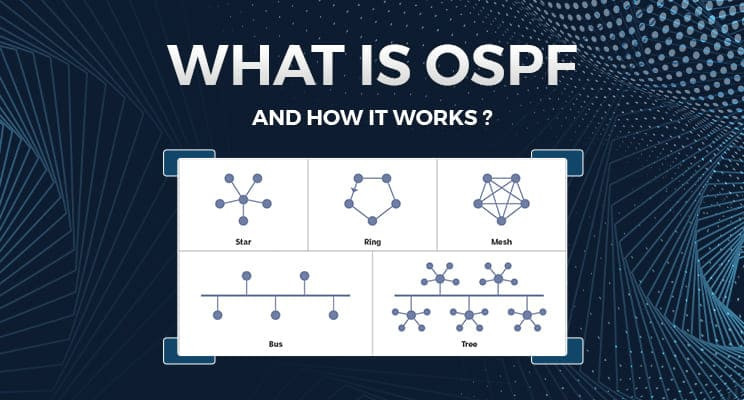views
What is OSPF? Understanding the OSPF Full Form and How It Works in Networking
In computer networks, routing protocols are the spine of communication among devices. OSPF is one of the most popular interior gateway protocols. However, what is OSPF, how does OSPF operate, and why is OSPF so important in today's networks—particularly with increasing network automation? In this blog, presented to you by UniNets, we shall discuss the OSPF full form, its operation, uses, and its applicability in the automated and secure networks of the present times.

OSPF Full Form and Meaning
OSPF is an abbreviation for Open Shortest Path First. OSPF is a link-state routing protocol employed in Internet Protocol networks. OSPF protocol enables routers to dynamically learn the optimal path for the forwarding of data packets depending on link states instead of using preconfigured routes.
OSPF falls into the category of Interior Gateway Protocol (IGP), meaning it is run within one autonomous system (AS), usually an internal network of an organization. OSPF is standardized by the IETF (Internet Engineering Task Force) and, on account of its efficiency and scalability, is popularly employed in enterprise networks.
What is OSPF and Why Is It Important?
At its foundation, OSPF operates to determine the most efficient route between routers. It achieves this by creating a map of the network and determining the shortest route using Dijkstra's algorithm. This provides for quicker convergence, zero network downtime, and load distribution over equal-cost paths.
The value of OSPF comes in the following features:
Quick convergence
Support for VLSM (Variable Length Subnet Mask)
Hierarchical network design by areas
Authentication for security
Scalability for large enterprise networks
How OSPF Works
So, how does OSPF actually work?
OSPF operates through the exchange of information regarding link state (interfaces) between routers. Here is a general overview of how it works:
Router Discovery: Neighboring routers send Hello packets to establish neighbors.
Database Exchange: Routers send link-state advertisements (LSAs) with topology information.
Topology Table: Each router constructs a Link-State Database (LSDB) from LSAs.
Shortest Path Computation: The router computes the shortest path to every network utilizing the Dijkstra algorithm.
Route Calculation Update: The computed routes are added to the routing table.
This dynamically computed route makes data delivery optimal and network performance
highly reliable.
OSPF in Network Automation
With the advancement of IT infrastructure, network automation has gained prominence to deal with intricate environments. Network configuration automation provides IT administrators with the capability to handle and configure devices via scripts or tools for automation, eliminating human errors and enhancing efficiency.
In such networks, OSPF protocol plays an important role:
It discovers and updates routes automatically, keeping human intervention low.
Network changes are reflected rapidly because of the fast convergence of OSPF.
It supports integration with different network automation systems such as Ansible, Cisco DNA Center, and Python-based systems.
What is Network Automation?
Network automation means using software to automatically configure, manage, test, and operate network devices. It ranges from basic script-based provisioning to complex AI-based infrastructure control.
Some of the popular examples of network automation using OSPF are:
Auto-router configuration with OSPF for dynamic routing
Automated failover features whereby OSPF redirects traffic rapidly
Integration of OSPF with cloud network orchestration tools
OSPF and Cybersecurity
With increased networks and their connectivity, cybersecurity consulting needs to be strong. Routing protocols such as OSPF need to be well secured against attacks like route injection or LSA spoofing.
Cybersecurity consultant advise on best practices to secure OSPF:
Enable OSPF authentication (plaintext or MD5)
Monitor routing tables for suspicious activities
Enable route filtering and prefix-lists
Regularly audit OSPF configurations
A cyber security consultant can assist businesses in implementing OSPF securely in automated environments, preventing automated modifications from inadvertently opening security doors.
The Role of UniNets in OSPF Training and Consulting
UniNets provides expert training and consulting in cutting-edge networking technologies such as OSPF, network automation, and cybersecurity.
Whether you're an individual looking to enhance your networking skills or an organization seeking cybersecurity consulting and network automation solutions, UniNets offers tailored programs to meet your goals. Our courses cover real-world use cases of network configuration automation, hands-on OSPF labs, and best practices recommended by top cybersecurity consultants.
Conclusion
In summary, OSPF (Open Shortest Path First) is an advanced and versatile routing protocol commonly implemented within enterprise networks. It accommodates contemporary IT requirements such as network automation systems, dynamic setups, and secure routing protocols. Network engineers, IT specialists, and cyber security consultants all need to know how OSPF functions.
In today’s fast-paced digital world, automating networks and securing them go hand-in-hand. Whether you’re just starting with OSPF or aiming to implement a fully automated, secure infrastructure, understanding the fundamentals is the first step.






















Comments
0 comment